Looking for wood that is rot and weather-resistant? Know the Types of Elm Trees and check out the Elm Tree Identification Guide.
Elm trees are popular for their super durability and how they do not rot, even if they are submerged in the water for extended periods. Elmwood has been used to make ship keels, archery bows, piers, and furniture. Keep reading to know the best Types of Elm Trees and also learn about the Elm Tree Identification Guide!
Wonder where do pine nuts come from? Click here to find out!
Elm Tree Identification
1. Check Basic Characteristics
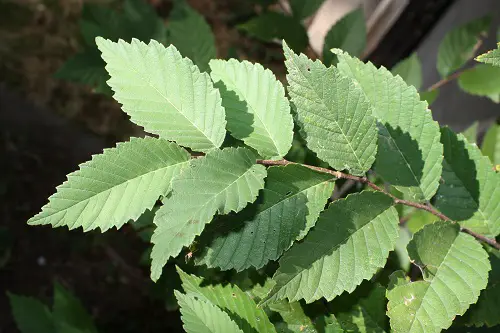
- Elm leaves are oval with a pointy end, jagged edges, and 10-12 prominent veins.
- The base of the leaves is asymmetrical, and wide varieties have a smooth top surface and fuzzy underside.
- Most elm species bloom and grow into oval or circular fruiting bodies called Samaras containing one seed.
2. Observe the Bark
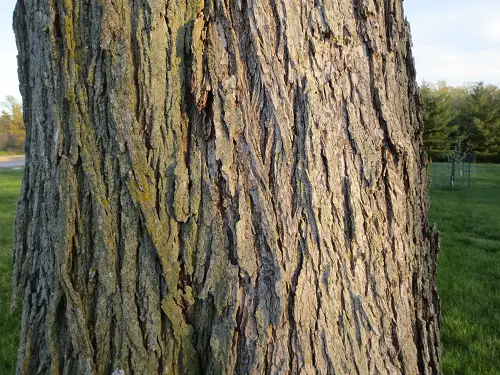
- The tree’s bark is light grey to dark brown, coarse, and rough with intersecting ridges.
- Although the Siberian Elm can be an exception, it is different with exfoliating bark that is orange or green in the shade. In contrast, the European White Elm has a smooth bark even on maturity. Also, Cedar elms feature a light purple-grey-colored bark.
3. Check Statistics

- Most mature elms grow up to 100-115 feet tall with a trunk diameter of 60-80 inches.
- The trees can grow 30-60 feet in width, depending on the variety.
- Usually, the deciduous tree has a shape of a fountain or a vase.
4. Take a Look at the Trunk
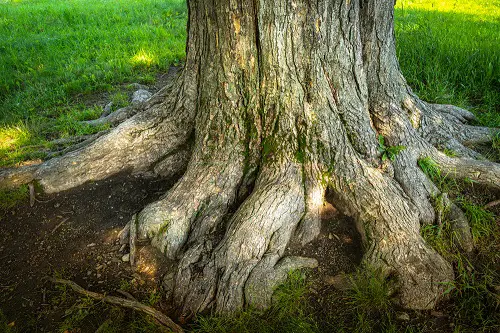
- Elm trees usually have split trunks. Two or more trunks branch upwards and away from the main one.
- It is not an elm if you spot a tree with one central vertical trunk.
5. Try to Spot Visible Roots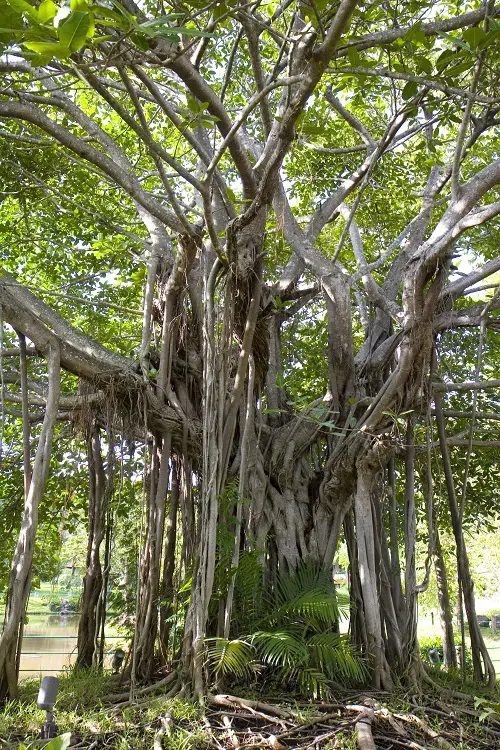
You can always spot a shallow, visible root system at the base of an elm tree with a broad reach. The root bark has a similar color and texture as the tree bark.
6. Observe the Tree in Winter

This deciduous tree sheds all leaves once every year, starting in autumn, gets entirely naked and then regrows the leaves in spring.
7. Watch Out for Sick Trees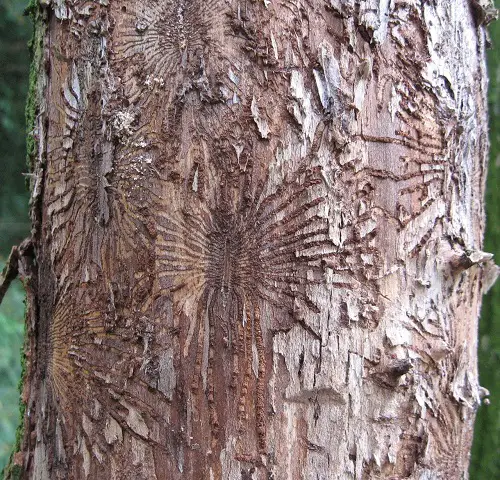
Generally, elm trees suffer from Dutch Elm disease. Watch out for some of the symptoms:
- Any dead leaves that have not detached themselves from the tree.
- Young shoots and wilting leaves are present at the same time.
- Discoloration or yellowing of leaves in spring or fall.
Read about the Best Palm Fruits here
Types of Elm Trees
1. American Elm
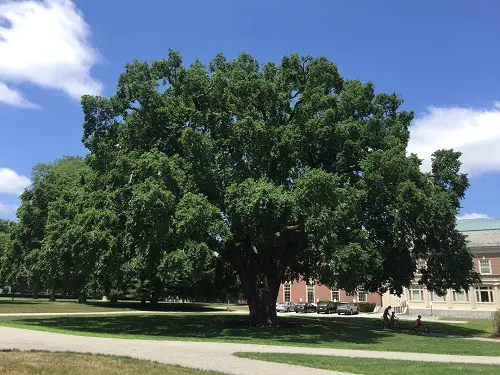
Botanical Name: Ulmus Americana
It is the state tree of both North Dakota and Massachusetts and is a classic. It is a tall shade tree with a canopy shaped like a vase spread across 40-75 feet.
2. European White Elm
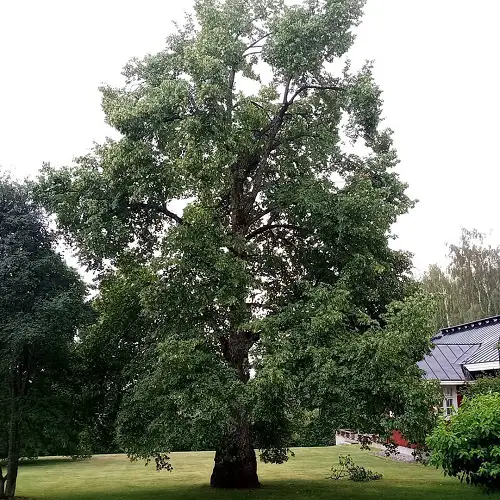
Botanical Name: Ulmus laevis
European White elm is also called the Russian Elm in the United States. It is a fast-grower with an open, broad oval crown that gradually becomes round.
3. David Elm

Botanical Name: Ulmus davidiana
The David elm is another small, deciduous tree with a dense canopy. It is essential to create more types of elm trees that are resistant to Dutch elm diseases.
4. Chinese Elm
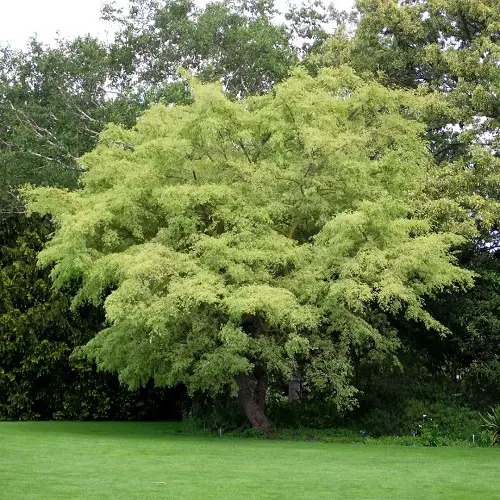
Botanical Name: Ulmus parvifolia
The Chinese elm tree has a unique exfoliating bark and rounded shape in shades of grey, orange, green, and brown. It can adapt to various soil types.
5. Cherry Bark Elm Tree
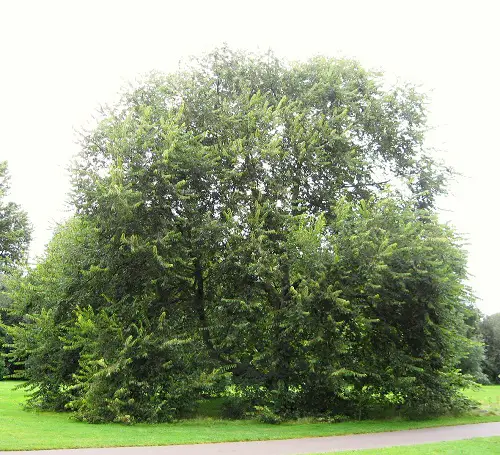
Botanical Name: Ulmus villosa
The cherry bark elm tree is also called a Marn tree, and this species is one of the Asiatic elms that usually grows in the Indian and Pakistan Himalayas.
6. Slippery Elm

Botanical Name: Ulmus rubra
Slippery Elm is a medium deciduous tree with a crown that ranges from rounded, broad, and vase-shaped. The inner bark is red, and the flowers are red-green.
7. Camperdown Elm
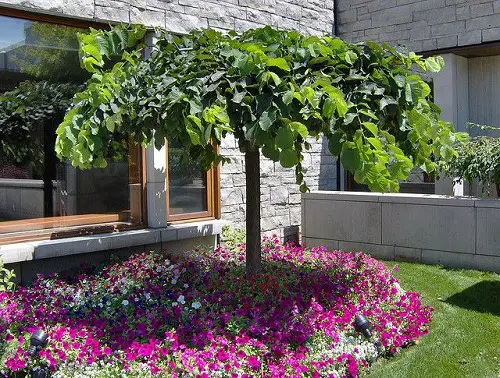
Botanical Name: Ulmus glabra ‘Camperdownii’
The Camperdown elm is a weeping kind of the Wych Elm that needs to be propagated via grafting. A dense, twisting, trailing foliage can create a beautiful hidden area underneath.
8. Siberian Elm
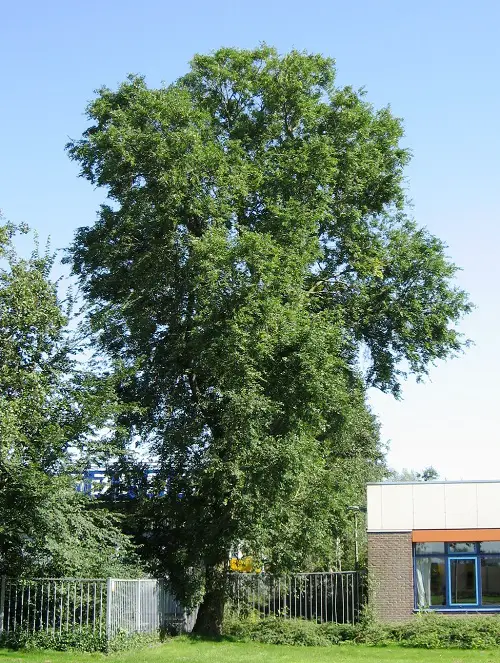
Botanical Name: Ulmus pumila
The Siberian Elm is a medium deciduous tree and can grow up fast. It grows by 3-4 feet annually, spreading out a canopy of about 40-50 feet on maturity.
9. Cedar Elm

Botanical Name: Ulmus crassifolia
The Cedar elm is a top choice for urban spaces as it can tolerate drought, poor soil, and pollution. It has no resemblance to a Cedar tree and has the smallest elm leaves.
10. English Elm

Botanical Name: Ulmus procera
The English Elm is a fast grower and can spread its canopy about 30-40 feet. With a hairy, upper leaf surface, this species can reproduce through suckers instead of seeds.
11. Winged Elm

Botanical Name: Ulmus alata
The Winged elm tree was named after the unusual growths along the entire length of its branches. The growth looks like warts and knots than wings that make the name sound stranger.
12. Rock Elm

Botanical Name: Ulmus thomasii
The Rock elm tree is common around the Midwestern areas of the United States, and this name is after American Civil Engineer David Thomas.
13. Wych Elm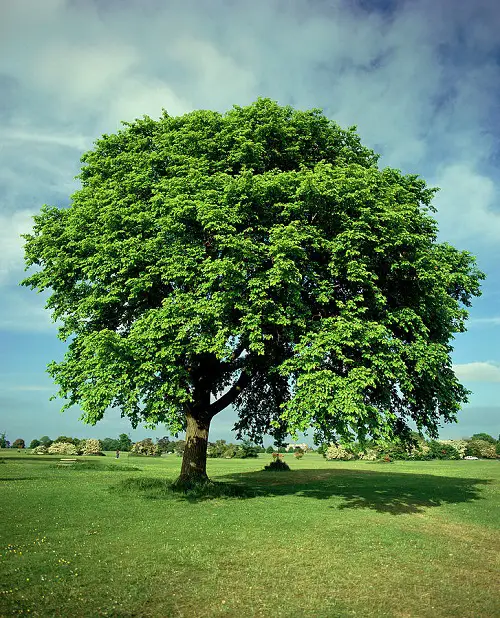
Botanical Name: Ulmus glabra
The Wych elm tree is usually referred to as the Scotch elm tree. This English elm cultivar is known for its umbrella shaped-canopy and can grow up to 100-130 feet.
14. Field Elm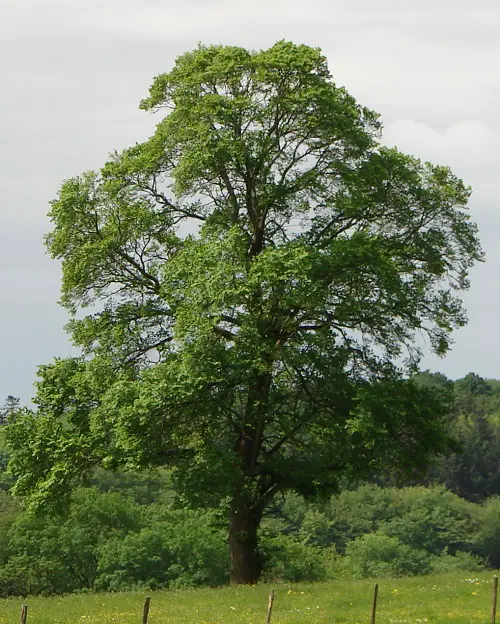
Botanical Name: Ulmus minor
The Field elm can grow up to 20-30 feet tall on maturity and is often known for its grey-brown-colored bark with crossing ridges. With delicate, small leaves in green, the species feature brown twigs that occasionally have corky ‘ridges’ or wings.


